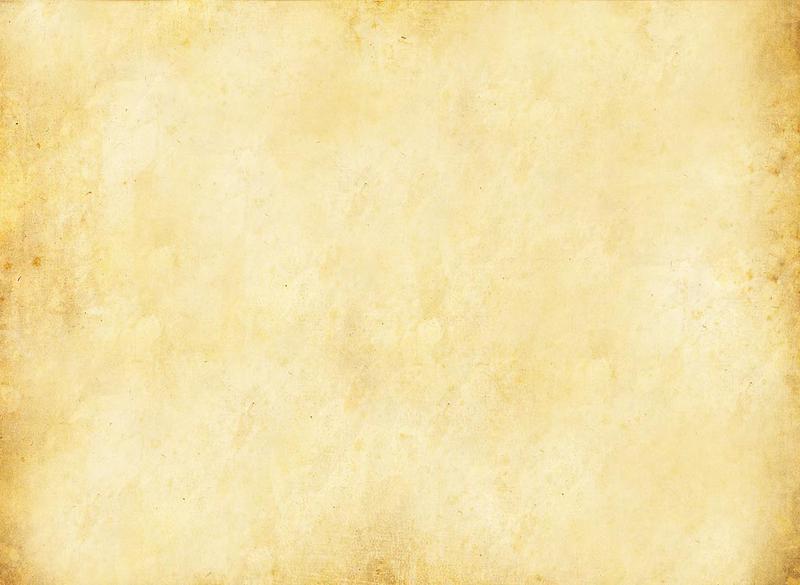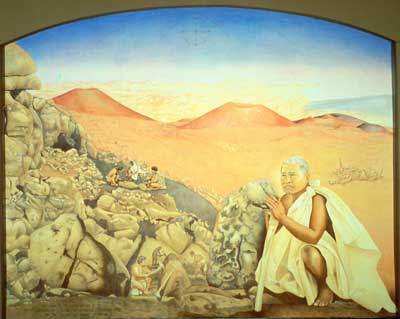Email Calley: Calley@CalleyO'Neill.com
Keanakako'i at Kings' Shops at Waikoloa Beach
Keanakako’i, Circa 1250 – 1400 AD, 1992, (8’ X 10’) Politec on concrete The Kings’ Shops Living History Murals, Waikoloa Beach Resort, Waikoloa, Hawai’i
Calley literally read everything there was to read about this ancient adze quarry, and, between the two murals, conducted 30 research consultations with living history experts in the field of life on the coast near Anaeho’omalu, and work at Keanakako’i.
Keanakako’i, a famous ancient adze quarry and Hawaiian Historic Place is located on the sacred mountain called Mauna-a-Wakea or Mauna Kea in the Mauna Kea ice age natural reserve area, in the District of Hamakua on the Island Of Hawai’i. Listed on the National Register of Historic Places, Keanakako’i is at the 12,400’ level. Remains of the caves and quarries are found from the 10,000 elevation to about 13,200’.
The Mauna, as it is lovingly called by Native Hawaiians is home to the Snow Goddess, Poliahu, whom I have experienced as the Goddess of the Temple of Hawai’i at the summit. The whole area is known as Wao Akua, sacred abode of the spirits.
Keanakako’i is the largest, best preserved and most complex basalt quarry in the Hawaiian Islands. It was the most important and extensive center of Hawaiian adze manufacturing. Basalt was found on all the major Hawaiian Islands and all the way to the Society Islands and Tahiti. It was such a surprise every time I hiked into Keanakako’i and saw the quarry as it looks so fresh and new, isolated on a huge mountain with a hill of chipped almost mirrored black basalt.
There is Lake Waiau, at 13,020 ‘, one of the highest lakes in the United States and one of the few natural perennial fresh water bodies in Hawai’i.
The kahuna, who were expert at the craft of chipping the hard basalt into adzes, had to be well suited for the harsh, extremely cold and windy weather at that elevation. Dressed in ti leaf capes and sandals, one can only imagine the hearty nature of these kahuna in sitting still and expertly chipping away, creating masterful stone blades.
Pictured in the mural is, in the foreground, Mau Pialug (1932 – 2010). Mau, Kahuna kalai ko’i and Kahuna kalai wa’a (master adze carver and master navigator) was a palu, a master navigator from Satawal in the Carolinian Islands. Papa Mau was the teacher for the Polynesian Voyaging Society in Hawai’i, dedicated to non-instrument navigation and open-ocean voyaging. He taught the young Hawaiian navigators, who showed such interest in learning to navigate by the stars, the swells, the signs of nature, the wind and the clouds. Mau had been concerned with the lack of interest in his own home of Satawal and guided the successful sail with celestial navigation of the Hokule’a from Hawai’I to Tahiti in 1976.
Also pictured, in the background are members of Na Kalai Wa’a (The Canoe Paddlers - Makali’i Voyaging Family):
(the late) Tiger Espere
(the late) Clay Bertelmann, then head of Na Kalai Wa’a
Braddah John Keolanui
And below, in the foreground to the left of Papa Mau, is Charlie Grace, with Tava Tuapu and Papa Mau in the background in silhouette.
The Goddess is Poliahu, most famous of Hawaii’s four snow goddesses. Poliahu resides on Maua a Wakea, and is depicted moi moi (resting) as it is summertime in both of the murals.
There is a celestial navigation compass painted in gold on the top of the mural linking mauka and makai, Earth and sky.
Art and Soul for the Earth
Big Island of Hawai'i





